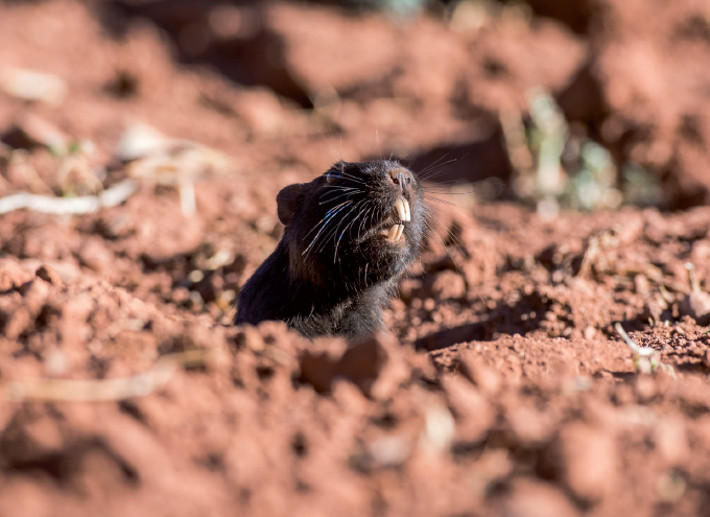First record of cururos Spalacopus cyanus (Molina, 1782) (Rodentia: Octodontidae) in the new protected area, Estancia Los Manantiales, San Juan, Argentina
DOI:
https://doi.org/10.31687/SaremNMS22.9.2Keywords:
Andes, Octodontidae, Rodentia, social rodent, subterranean rodentAbstract
The cururo is a social, subterranean rodent in the Family Octodontidae that is believed to be largely endemic to Chile. We report the first record of cururos for Estancia Los Manantiales, San Juan Province, Argentina, an area proposed for designation as a mosaic of national and provincial protected areas. This record is especially important given that Estancia Los Manantiales is located in the high Andes, an ecoregion that is poorly represented in Argentina's system of protected areas. Although the high Andes provide important ecosystem services, they have been little studied, thereby underscoring the need for research in and protection of this critical area.
References
Bauni, V., et al. 2022. Biodiversity of vertebrates in Argentina: patterns of richness, endemism and conservation status. ZooKeys 1085:101–127. https://doi.org/10.3897/zookeys.1085.76033.
Bertonatti, C., & C. Fernández Balboa. 2021. Un Parque Nacional para la historia: donde fue el cruce de los Andes. Fundación de Historia Natural Félix de Azara, Buenos Aires.
Lacey, E. A., S. L. O'Brien, R. Sobrero, & L. A. Ebensperger. 2019. Spatial relationships among free-living cururos (Spalacopus cyanus) demonstrate burrow sharing and communal nesting. Journal of Mammalogy 100:1918–1927. https://doi.org/10.1093/jmammal/gyz117.
Opazo, J. C., M. P. Bugueño, M. J. Carter, R. E. Palma, & F. Bozinovic. 2008. Phylogeography of the subterranean rodent Spalacopus cyanus (Caviomorpha, Octodontidae). Journal of Mammalogy 89:837–844. https://doi.org/10.1644/07-MAMM-A-068.1.
Ortiz, P. E., S. Cirignoli, D. H. Podestá, & U. Pardiñas. 2000. New records of Sigmodontine rodents (Mammalia: Muridae) from High Andean localities of northwestern Argentina. Biogeographica 76:133–140.
Osinaga Acosta, O., & E. Martín. 2018. Estado actual de conocimiento de las aves de la Puna argentina. (H. R. Grau, M. J. Babot, A. E. Izquierdo, & A. Grau, eds.). La Puna argentina: Naturaleza y cultura. Fundación Miguel Lillo, Tucumán.
Pardiñas, U., C. A. Galliari, E. R. Krauczuk, & N. R. Rey. 2021. Overlooked diversity in Argentinean caviomorph rodents: the need to increment field efforts. Mammalia 85:287–290. https://doi.org/10.1515/mammalia-2020-0097.
Perovic, P. G., et al. 2018. Mamíferos puneños y altoandinos. (H. R. Grau, M. J. Babot, A. E. Izquierdo, & A. Grau, eds.). La Puna argentina: naturaleza y cultura. Fundación Miguel Lillo, Tucumán.
Schipper, J., et al. 2008. The status of the world's land and marine mammals: diversity, threat, and knowledge. Science 322:225–230.
Tellaeche, C. G., M. de las M. Guerisoli, C. Napolitano, D. Di Nucci, & J. I. Reppucci. 2020. Filling a gap in Andean Cat Leopardus jacobita (Cornalia, 1865) (Mammalia: Carnivora: Felidae) distribution range: new record in La Rioja province, Argentina. Journal of Threatened Taxa 12:15276–15278. https://doi.org/10.11609/jott.5392.12.2.15276-15278.

Downloads
Published
How to Cite
Issue
Section
License
Copyright (c) 2022 Juan Ignacio Reppucci, Cintia Gisele Tellaeche, Aldo Luis Banching, Emiliano García Loyola, Edwin Harvey, Eilee A. Lacey

This work is licensed under a Creative Commons Attribution-NonCommercial 4.0 International License.

